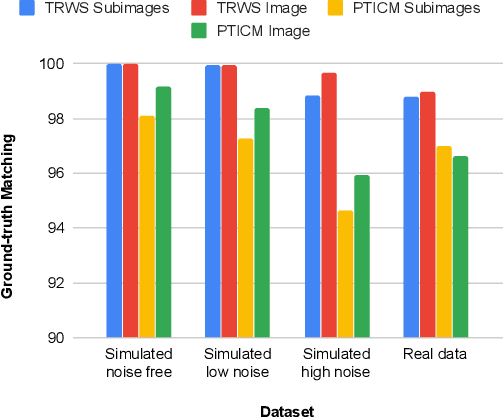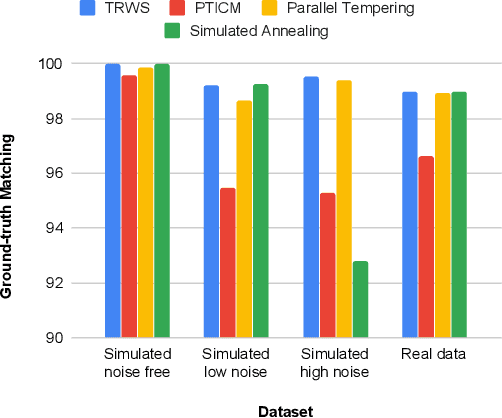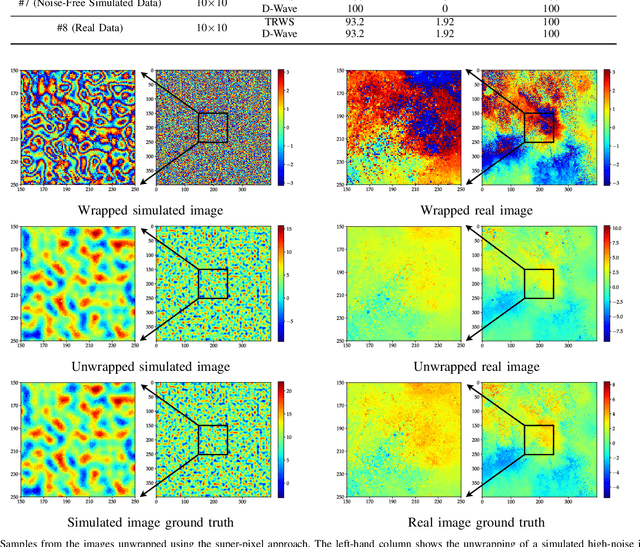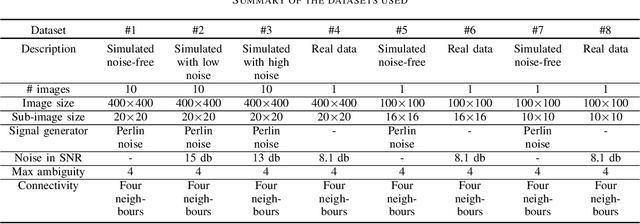Amirali Baniasadi
LE-CapsNet: A Light and Enhanced Capsule Network
Nov 12, 2025Abstract:Capsule Network (CapsNet) classifier has several advantages over CNNs, including better detection of images containing overlapping categories and higher accuracy on transformed images. Despite the advantages, CapsNet is slow due to its different structure. In addition, CapsNet is resource-hungry, includes many parameters and lags in accuracy compared to CNNs. In this work, we propose LE-CapsNet as a light, enhanced and more accurate variant of CapsNet. Using 3.8M weights, LECapsNet obtains 76.73% accuracy on the CIFAR-10 dataset while performing inference 4x faster than CapsNet. In addition, our proposed network is more robust at detecting images with affine transformations compared to CapsNet. We achieve 94.3% accuracy on the AffNIST dataset (compared to CapsNet 90.52%).
Convolutional Fully-Connected Capsule Network (CFC-CapsNet): A Novel and Fast Capsule Network
Nov 06, 2025Abstract:A Capsule Network (CapsNet) is a relatively new classifier and one of the possible successors of Convolutional Neural Networks (CNNs). CapsNet maintains the spatial hierarchies between the features and outperforms CNNs at classifying images including overlapping categories. Even though CapsNet works well on small-scale datasets such as MNIST, it fails to achieve a similar level of performance on more complicated datasets and real applications. In addition, CapsNet is slow compared to CNNs when performing the same task and relies on a higher number of parameters. In this work, we introduce Convolutional Fully-Connected Capsule Network (CFC-CapsNet) to address the shortcomings of CapsNet by creating capsules using a different method. We introduce a new layer (CFC layer) as an alternative solution to creating capsules. CFC-CapsNet produces fewer, yet more powerful capsules resulting in higher network accuracy. Our experiments show that CFC-CapsNet achieves competitive accuracy, faster training and inference and uses less number of parameters on the CIFAR-10, SVHN and Fashion-MNIST datasets compared to conventional CapsNet.
Generating Synthetic Contrast-Enhanced Chest CT Images from Non-Contrast Scans Using Slice-Consistent Brownian Bridge Diffusion Network
Aug 23, 2025



Abstract:Contrast-enhanced computed tomography (CT) imaging is essential for diagnosing and monitoring thoracic diseases, including aortic pathologies. However, contrast agents pose risks such as nephrotoxicity and allergic-like reactions. The ability to generate high-fidelity synthetic contrast-enhanced CT angiography (CTA) images without contrast administration would be transformative, enhancing patient safety and accessibility while reducing healthcare costs. In this study, we propose the first bridge diffusion-based solution for synthesizing contrast-enhanced CTA images from non-contrast CT scans. Our approach builds on the Slice-Consistent Brownian Bridge Diffusion Model (SC-BBDM), leveraging its ability to model complex mappings while maintaining consistency across slices. Unlike conventional slice-wise synthesis methods, our framework preserves full 3D anatomical integrity while operating in a high-resolution 2D fashion, allowing seamless volumetric interpretation under a low memory budget. To ensure robust spatial alignment, we implement a comprehensive preprocessing pipeline that includes resampling, registration using the Symmetric Normalization method, and a sophisticated dilated segmentation mask to extract the aorta and surrounding structures. We create two datasets from the Coltea-Lung dataset: one containing only the aorta and another including both the aorta and heart, enabling a detailed analysis of anatomical context. We compare our approach against baseline methods on both datasets, demonstrating its effectiveness in preserving vascular structures while enhancing contrast fidelity.
A Review on Sound Source Localization in Robotics: Focusing on Deep Learning Methods
Jul 01, 2025Abstract:Sound source localization (SSL) adds a spatial dimension to auditory perception, allowing a system to pinpoint the origin of speech, machinery noise, warning tones, or other acoustic events, capabilities that facilitate robot navigation, human-machine dialogue, and condition monitoring. While existing surveys provide valuable historical context, they typically address general audio applications and do not fully account for robotic constraints or the latest advancements in deep learning. This review addresses these gaps by offering a robotics-focused synthesis, emphasizing recent progress in deep learning methodologies. We start by reviewing classical methods such as Time Difference of Arrival (TDOA), beamforming, Steered-Response Power (SRP), and subspace analysis. Subsequently, we delve into modern machine learning (ML) and deep learning (DL) approaches, discussing traditional ML and neural networks (NNs), convolutional neural networks (CNNs), convolutional recurrent neural networks (CRNNs), and emerging attention-based architectures. The data and training strategy that are the two cornerstones of DL-based SSL are explored. Studies are further categorized by robot types and application domains to facilitate researchers in identifying relevant work for their specific contexts. Finally, we highlight the current challenges in SSL works in general, regarding environmental robustness, sound source multiplicity, and specific implementation constraints in robotics, as well as data and learning strategies in DL-based SSL. Also, we sketch promising directions to offer an actionable roadmap toward robust, adaptable, efficient, and explainable DL-based SSL for next-generation robots.
PDR-CapsNet: an Energy-Efficient Parallel Approach to Dynamic Routing in Capsule Networks
Oct 04, 2023



Abstract:Convolutional Neural Networks (CNNs) have produced state-of-the-art results for image classification tasks. However, they are limited in their ability to handle rotational and viewpoint variations due to information loss in max-pooling layers. Capsule Networks (CapsNets) employ a computationally-expensive iterative process referred to as dynamic routing to address these issues. CapsNets, however, often fall short on complex datasets and require more computational resources than CNNs. To overcome these challenges, we introduce the Parallel Dynamic Routing CapsNet (PDR-CapsNet), a deeper and more energy-efficient alternative to CapsNet that offers superior performance, less energy consumption, and lower overfitting rates. By leveraging a parallelization strategy, PDR-CapsNet mitigates the computational complexity of CapsNet and increases throughput, efficiently using hardware resources. As a result, we achieve 83.55\% accuracy while requiring 87.26\% fewer parameters, 32.27\% and 47.40\% fewer MACs, and Flops, achieving 3x faster inference and 7.29J less energy consumption on a 2080Ti GPU with 11GB VRAM compared to CapsNet and for the CIFAR-10 dataset.
Quantum Annealing Approaches to the Phase-Unwrapping Problem in Synthetic-Aperture Radar Imaging
Oct 01, 2020



Abstract:The focus of this work is to explore the use of quantum annealing solvers for the problem of phase unwrapping of synthetic aperture radar (SAR) images. Although solutions to this problem exist based on network programming, these techniques do not scale well to larger-sized images. Our approach involves formulating the problem as a quadratic unconstrained binary optimization (QUBO) problem, which can be solved using a quantum annealer. Given that present embodiments of quantum annealers remain limited in the number of qubits they possess, we decompose the problem into a set of subproblems that can be solved individually. These individual solutions are close to optimal up to an integer constant, with one constant per sub-image. In a second phase, these integer constants are determined as a solution to yet another QUBO problem. We test our approach with a variety of software-based QUBO solvers and on a variety of images, both synthetic and real. Additionally, we experiment using D-Wave Systems's quantum annealer, the D-Wave 2000Q. The software-based solvers obtain high-quality solutions comparable to state-of-the-art phase-unwrapping solvers. We are currently working on optimally mapping the problem onto the restricted topology of the quantum annealer to improve the quality of the solution.
 Add to Chrome
Add to Chrome Add to Firefox
Add to Firefox Add to Edge
Add to Edge